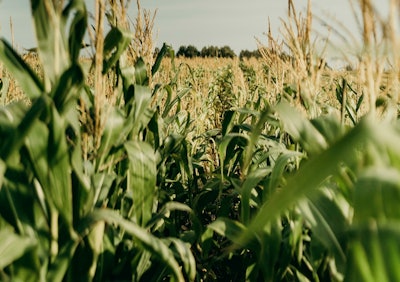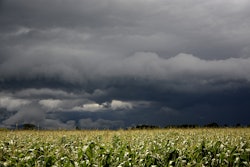
Crop Production & WASDE Recap: Wheat Steals the Show
USDA surprised the market with a US HRS crop at 305 million bushels.
That would be the smallest harvest for the US since 1988.
US winter wheat production was bumped higher but the tight HRS balance sheet lifted other markets for the day.
USDA held yields in the US corn and bean balance sheets but did raise US new crop corn exports 50 MB probably on the lower Brazil crop.
No major changes were made to the US soybean balance sheets.
Global wheat production was trimmed versus last month; US, Canada, and Russia had trims while Australia, the EU, and Ukraine notched gains.
Global corn production was raised for the 2021/22 crop year (but was lowered for 2020/21 thanks to the smaller Brazil crop).
China’s corn imports were held at 26 million tonnes.
USDA lowered China’s bean imports by 1 million tonnes to 102 million.
FBN’s Take On What It Means: Wheat took center stage with Minneapolis futures shooting higher and carrying other markets with it. There is upside risk on the table for Minneapolis futures.
US Crop Condition & Report as of July 11
US corn conditions came in at 65% good to excellent, up one point from the previous week.
Reductions in Illinois and Nebraska of 5% were offset by gains of 4% in Iowa and 7% in South Dakota.
The crop was 26% silking, the same as last year, and compared to the average at 30%.
Soybean conditions came in at 59% good to excellent, unchanged from the previous week.
46% of the crop was blooming versus 40% average, and 10% was setting pods on par with the average.
Winter wheat harvest was 59% complete versus the average at 65%.
The spring wheat crop was 83% headed versus the 81% average.
Conditions for the spring wheat crop worsened again; the percent rated good to excellent was steady at 16% but the percent rated poor to very poor jumped from 50% a week ago to 55% this week.
Cotton crop conditions jumped to 56% good to excellent from 52% last week, while 16% were setting bolls versus 20% average.
FBN’s Take On What It Means: Rains for Iowa, South Dakota and southern Minnesota were especially timely. Showers were apparently too late to help spring wheat. The forecast remains active for the entire Corn Belt and has the potential to fill in areas that were missed last week with above normal rainfall expected and minimal heat. Some areas that are already too wet could see ratings deteriorate further. FBN’s corn yield estimate has moved higher and we expect prices to stabilize.
FBN Market Advisory services are offered by FBN BR LLC, dba FBN Brokerage, FBN BR and FBN Market Advisory (NFA ID: 0508695)
The risk of trading futures and options can be substantial and may not be suitable for all investors. Past performance is not necessarily indicative of future results.
This is not an offer or solicitation in any jurisdiction where we are not authorized to do business or where such offer or solicitation would be contrary to the local laws and regulations of that jurisdiction, including, but not limited to, persons residing in Australia and Canada.














